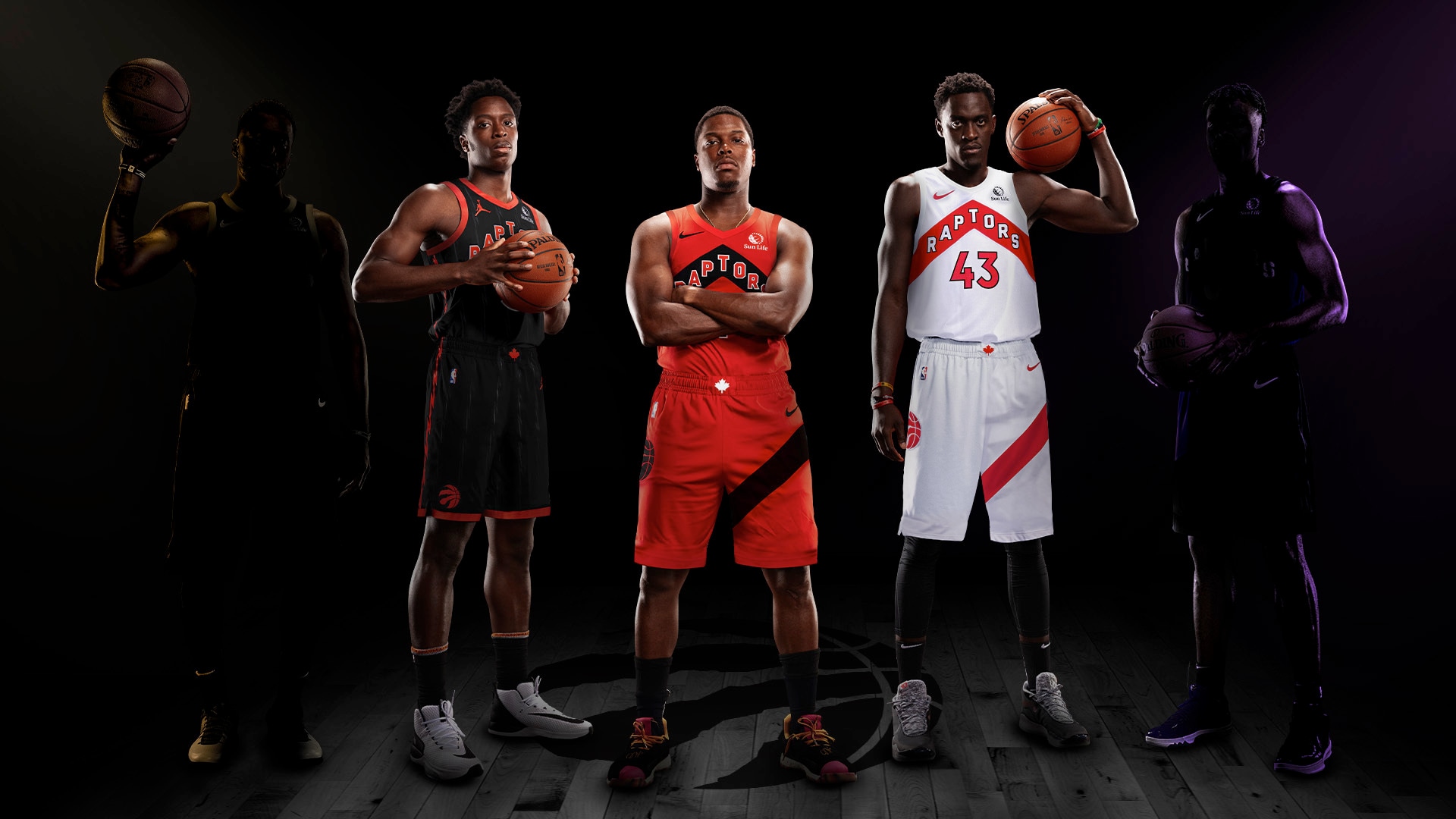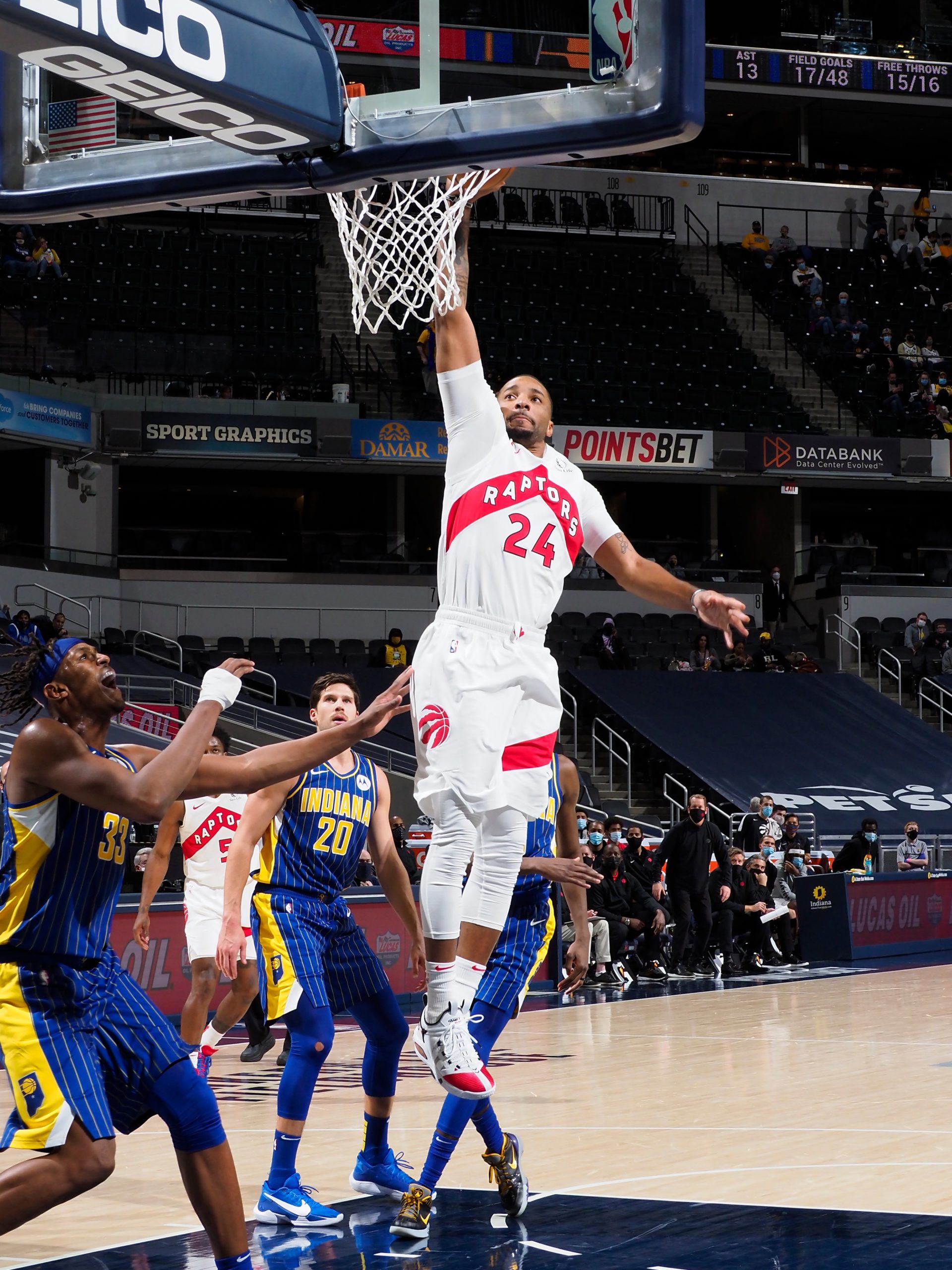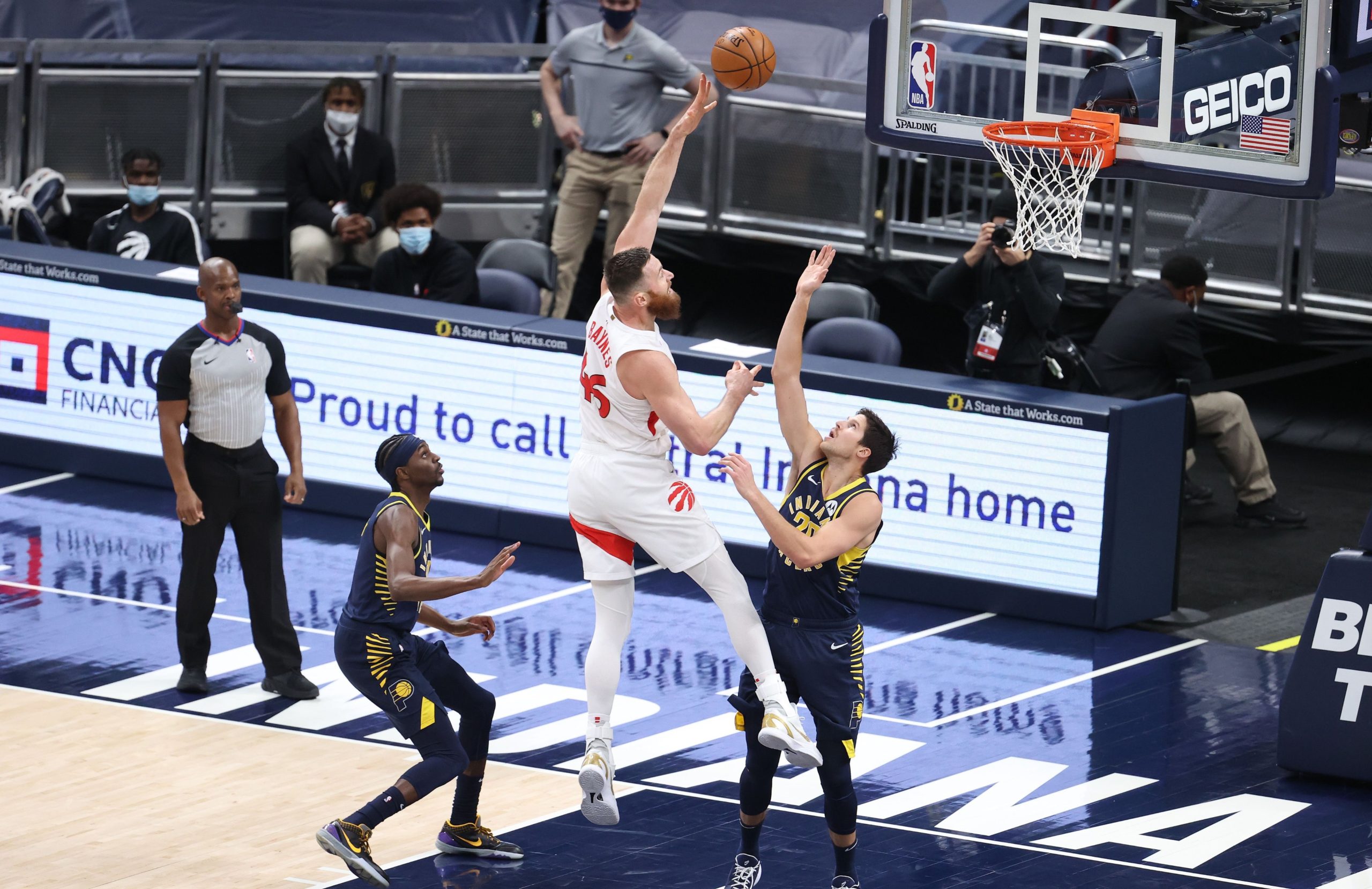Watching the 2020-21 Raptors has been like watching a movie that your significant other chose: you’re obliged to be there — knowing full well that there are other, more enjoyable movies on the shelf — but your watching becomes a test in the strength of your relationship. Do you really care about this person enough to see it through? Are you only in it for the sex (championship)? Or is it going to get better as it goes along, if only you have enough patience?
Some Raptors’ fans have proven to only be there for the sex. Others have decided to put on a different movie. But the rest of us have stayed faithful. And you should too, because as bad as it started, things are getting better.
Prior to the season, in December, I wrote about the five most interesting storylines for the Raptors 2020-21 season. Now that we are sixteen games into the season and the Raptors are 7-9, I am going to revisit each of those storylines and examine some of the biggest topics in Dino-land. Let’s get into it.
1. Frontcourt depth
“My biggest concern heading into the season pertains to the Raptors’ frontcourt,” I wrote in December. “Specifically, do they have enough depth, versatility, and flexibility in their frontcourt to succeed?”
This is an area where the Raptors have simultaneously under and over-achieved early in the season, in ways that I did not expect, to be frank.
On one hand, Aron Baynes had a really rough start to the season and looked largely unplayable for the first 12 games. It turns out that we might have underestimated just how hard it is for a 34-year-old who had COVID-19 in July to recover, get back in shape, and learn a new system. After shooting 35.0 percent from three last season, Baynes has not shot the ball well this season, which really cramps the spacing with him on the floor, and he has not been effective rolling to the rim either. Almost every starter has a worse +/- with Baynes on the floor than without him, and his presence makes life especially hard for Pascal Siakam to operate on the offensive end. Fortunately, Baynes appears to be on his way back after a really solid (defensive) series against the Miami Heat followed by his best game of the season against Indiana.
On the other hand, Chris Boucher has exceeded all expectations this season. Boucher has been one of the most efficient players in the league, knocking down 49.2 percent of his threes and is near the top of the league in true-shooting at 71.4 percent. More importantly, perhaps, is the fact that Boucher has really shored up his mistakes on the defensive end of the floor: He is no longer as likely to bite on pump-fakes or ball-watch and fail to rotate, and although he still struggles to stay in front of guards on the perimeter, Boucher is making up for it by averaging 2.3 blocks per game. The coaching staff has put Boucher in better positions to succeed on the defensive end this season, either by running a zone or by having Boucher defend non-centers away from the basket. It’s finally all clicking for Boucher, who leads the team in +/- at +55.
The other positive surprise in the frontcourt has been Stanley Johnson, who has earned a spot in the rotation as a backup center behind Baynes. Johnson has been really effective in that role, using his “big in the butt” frame to hold opposing centers off the scoresheet and the boards. Offensively, Johnson is shooting 46.7 percent from three and has really good playmaking chops for his position, finally excelling as a role player after struggling to find his footing in the league for years. His ability to defend centers also enables OG Anunoby to defend opposing wings, which is the best use of his talents.
While many of us anticipated the small-ball lineup of Lowry-VanVleet-Powell-Siakam-Anunoby being an important factor this season, that lineup has only played 29 minutes. The Raptors have been hesitant to play that small for two reasons. One is that Norman Powell, the de facto three in those lineups, has been really inconsistent this season, especially on the defensive end. The other is that Boucher and Johnson have been so good that it has made more sense to close most games with one of them on the floor.
Do the Raptors have enough frontcourt depth to win a playoff series? As currently constructed, probably not. But as Baynes rounds into form and the coaching staff settles on a rotation with Johnson playing backup center (and Yuta Handsonabe being the glue-guy), it is beginning to look competent. Until they go up against Destroyer-of-all-Frontcourts Joel Embiid, that is.
2. The Pascal Siakam question
Siakam has been disappointing to start the season. While many of us were calling for a Pascal Siakam revenge tour after a disappointing showing in the bubble, Siakam has failed to rediscover his scoring prowess and looks overextended as a No. 1 option.
Instead of building on his 55.4 true-shooting percentage on 28.1 percent usage from last season, Siakam has seen his true-shooting fall to 51.9 percent even as his usage has fallen to 24.8. A lot of that is due to his poor shooting, which should regress back to the mean sooner than later: Siakam is 25.4 percent from three and is clearly losing confidence in his shot, putting up just 4.5 attempts per game (compared to 6.1 attempts last season). The bad news is that Siakam’s inability to hit a jump-shot from outside is hurting the spacing for him and his team, as opposing defences are loading up in the paint and daring the Raptors to beat them from the outside. The good news is that Siakam is not this bad of a shooter, and if (once) he rediscovers his form and confidence, watch out.
Siakam is shooting an improved 51.6 percent from inside the arc in spite of teams making it a priority to stop him from getting to the rim. Once he starts hitting some threes, teams are going to be forced to defend him further out and potentially even go over screens, opening up the floor for him and his teammates. There have been stretches when Siakam is hitting everything and teams are forced to double-team him, and when they do, he is making the right reads much quicker than he has in the past.
That is one area of Siakam’s game that has been better at from the jump: his playmaking. Siakam is assisting on a career-high 21.6 percent of his teammates’ baskets when he is on the floor, acting as a point-forward a lot of the time. He is daring teams to double-team him in the post — posting up on a career-high 15.9 percent of possessions — and finding open teammates when they do. Even when he is not getting the assist, Siakam is often the one making the pass before the pass.
One of the most surprising aspects of Siakam’s game that has taken a hit this season is his transition scoring. Siakam is one of the most lethal finishers in the league once he gets a head of steam, but he just isn’t running much at all this season and, when he does, is not scoring effectively, having seen his transition points per game go from 1.17 last season to 0.74 this season. From the looks of it, fatigue is playing a big factor, as Nurse is asking Siakam to clean up mistakes defensively, and he has excelled as a help defender who steps into the lane when his teammates get blown by and a rim protector when he is the weak-side help. Unfortunately, whether it is due to a nagging injury or fatigue, it doesn’t appear that he can do this much on defence and also run in transition, so maybe the system has to change in order to compensate.
Siakam has also seen his free-throw attempts drop from 5.1 to 4.3 per game, and with the Raptors as a whole only averaging 19.9 free-throws per game, 27th in the league, Siakam needs to find more ways to draw fouls.
One last observation about Siakam’s game: he seems to have more success scoring when he attacks the defence before giving them too much time to get set. I don’t mean necessarily in transition, though that would be nice too, but instead than facing up in triple-threat and scanning his options — which gives the defence time to scan theirs and, most importantly, anticipate the help, which Siakam requires a lot of — Siakam seems to thrive when he makes quicker decisions with the ball. The numbers bear this out, as Siakam is shooting 57.8 on two-point field goals within 2 seconds of touching the ball, 50.0 percent from 2-6 seconds, and 47.5 percent when shooting after more than 6 seconds of touching it. Just another thing to keep an eye on.
3. Offensive distribution
One stat that has piqued my interest this season has to do with the Raptors transition game: The Raptors went from the third most efficient transition offence last season — scoring 1.15 points per possession on the break — to one of the least efficient teams this season, scoring just 1.05 points per possession. They are still running on 20.6 percent of possessions, good for second-most in the league, but if they want to have success playing this fast, they will need to be more efficient. That comes down to guys like Siakam and Powell finishing better at the rim, as well as VanVleet making less selfish decisions with the ball in his hands on the run.
In the half-court, the Raptors have followed last season’s blueprint of being infrequent and ineffective in the pick-and-roll, which makes it really hard for any modern NBA offence to survive. The Raptors’ ball handlers are finishing pick-and-rolls just 12.9 percent of possessions, far and away the least frequently in the league, and they are scoring 0.89 points per possession, which ranks in the middle of the pack.
Their big men are not having much more success rolling to the rim. They are scoring 1.05 points per possession, which is better than last season’s Raptors (largely thanks to Boucher who is scoring an outrageous 1.55 points per possession on the roll (Baynes is scoring 0.42 in the playtype, worst in the league)), but they are only finishing 5.8 percent possessions on the roll, which ranks near the bottom of the NBA.
This might sound boring and obvious, but if the Raptors are going to improve their half-court offence, it starts by improving their pick-and-roll efficiency. They theoretically have all the tools to be a good if not great pick-and-roll team: a great screener in Baynes, a great roller in Boucher, good playmakers in Kyle Lowry and Pascal Siakam, along with great shooters to space the floor in OG Anunoby and Fred VanVleet. But they haven’t been good at all.
Most elite offensive have a pick-and-roll duo that they can depend on late in games — think of Lebron/AD, Murray/Jokic — but the Raptors are all over the place in clutch time, which may be why they rank 28th in the league at -28.6 per one hundred possessions in the last five minutes of games. They want to be unpredictable, but there is something to be said for a duo developing chemistry in the pick-and-roll, and I think the most obvious partners would be Lowry and Siakam: both can handle or screen for each other, make the right pass on the move, and punish mismatches.
4. Flynnsanity
As is the case with many Raptors this season, Malachi Flynn has not been good. I thought he could help stabilize the bench with his playmaking tools, but teams have dared him to score by taking away passing lanes, and Flynn has failed to take advantage of his opportunities, shooting just 26.5 percent from the field.
Flynn can create space with ease and has shown the ability to score from all three levels in college. I’m still confident he can be a difference-maker as the season goes on. After all, this is a guy whose college season got cancelled last March and went without a Summer League or a real training camp. It was always going to take some time to ramp up and, being a rookie guard, to read the floor at an advanced level. Flynn has shown flashes but is yet to put together a sustained run of success. However, with more consistent opportunity, he should be able to better learn the tendencies of NBA defences and of his teammates and be more effective.
Defensively, Flynn is ahead of schedule. He’s small but his screen-navigation is at a high level and he rarely commits silly fouls. He has fit into the Raptors switch-heavy, aggressive defence pretty seamlessly, and because of that, he should be able to stay on the floor.
Outside of Flynn, the Raptors bench has been up and down. As Louis Zatzman wrote about here, the Raptors have recently transitioned to playing two starters with bench units rather than Lowry-plus-bench units like they have in years past, and it’s working. One of the reasons they have done this is because outside of Boucher, their bench has not been very reliable this year. The problem is that they have a bunch of specialists but very few two-way players, and so the coaching staff is still working to figure out how to put each player in the best possible role to succeed.
5. Terence Davis II and fans during COVID-19
I am not going to dive any further into the TDII issue right now because I think it has been covered pretty extensively. If you are interested, I would encourage you to read this fan’s account of why it has been frustrating to watch the Raptors this season.
In terms of COVID-19, I hope the league is over the worst part of the season. While I understand that players wanted to go on with the season given the financial incentive, I still believe that given how little we know about the long-term effects of coronavirus, it probably isn’t worth putting so many people at risk when they could have waited a few months for it the virus to die down and/or for a vaccine to become available.
Fortunately for the Raptors, the team has been without any postponements and they stopped allowing fans into games at Amalie Arena in Tampa Bay on January 9th after finding that it was not worth the risk (and that fans were not cheering for the Raptors and often not wearing masks). The Raptors have gone 4-1 at home (home?) since. Go figure.




